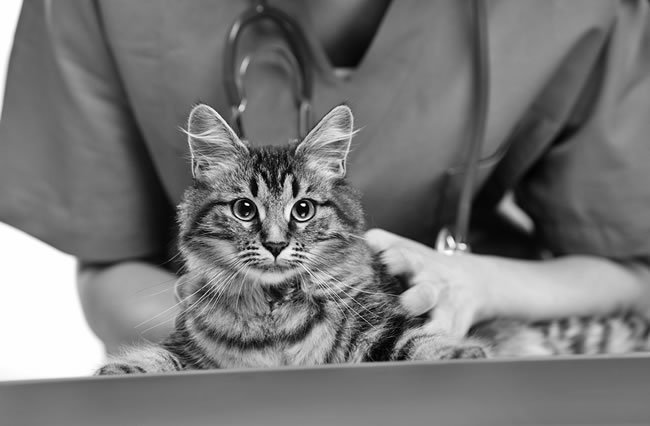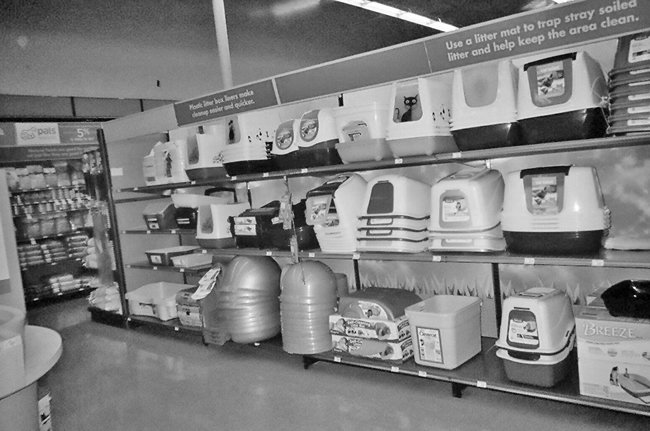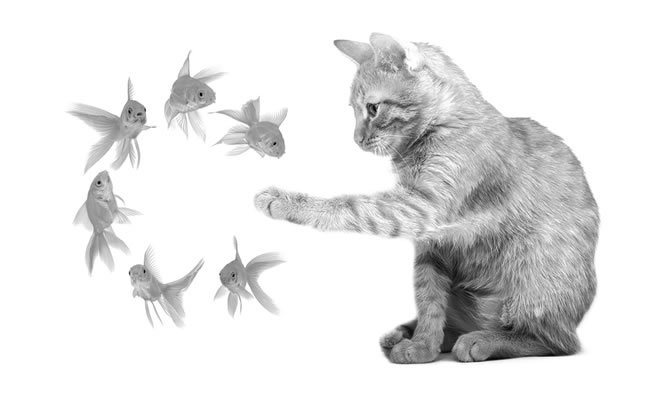Photo: Bigstock

Thinking outside the box has become a clich, but its still a praiseworthy trait. When your cat eliminates outside the litter box, however, its a problem. House soiling – urination or defecation any place other than in a litter box – is a major reason that owners surrender their cats to shelters.
Cats dont avoid the box because theyre being spiteful. Theyre raising an alarm. Cats who eliminate outside the litter box are communicating to their owners that something is wrong, either with a specific aspect of their box, their health or relationship with another member of the household – feline or human, says Pamela Perry, DVM, Ph.D., a lecturer in animal behavior at Cornell University College of Veterinary Medicine. It is the most commonly reported feline behavior complaint to veterinary behaviorists.
Change of Terms. The American Association of Feline Practitioners considered the problem so significant – especially in the relinquishment of cats – that, along with the International Society of Feline Medicine, it issued guidelines last year replacing the term inappropriate urination with house soiling. The goal is to avoid suggesting cat misconduct. Quite simply: The cats physical, social or medical needs are not being met, the association says in its 22-page guide intended to help improve cats welfare and enhance the human-feline bond.
If your cat has developed an aversion to the litter tray, chances are he associates it with pain, fear or other negative experiences. But dont give up on kitty. The behavior is treatable, Dr. Perry says. With a bit of detective work, you can figure out what aspect is problematic and remedy it.
The first step is a thorough veterinary examination. Numerous medical conditions can cause your cat to stop using the litter box, particularly if the problem results in pain while urinating or defecating. The prime suspects:
– Feline idiopathic cystitis (FIC), an often-painful condition of unknown cause. Signs include inflammation or infection of the urinary tract, straining to urinate, inability to urinate, bloody urine and/or crying during urination. It has no means of definitive diagnosis or treatment. In my practice the distribution among the causes is fairly equal although FIC cases do outnumber other medical causes significantly in younger cats, says Hazel C. Carney, DVM, MS, ABVP, co-author of the guidelines, in Garden City, Idaho.
– Diarrhea or abdominal cramps.
– Disease or failure of organs such as the kidney, liver, pancreas or thyroid that increase water consumption and urinary frequency.
– Intestinal parasites or malignancies that create an urgent need to defecate.
– Mobility problems, such as arthritis or accidents that prevent access.
– Other diseases that affect the bones or muscles.
– Cognitive dysfunction.
– Constipation. It may hurt to defecate or the stool may fall out after the cat leaves the litter box – especially if the cat is older, Dr. Perry says.
Betty Liddick

Tests to evaluate a cat that is house soiling may include a blood chemistry profile, urinalysis and fecal analysis, X-rays, ultrasound and urine cultures. Abnormal results may indicate a condition that can be corrected. Managing any medical issues is crucial, says Dr. Perry. Otherwise the problem will never be resolved adequately.
When medical issues have been ruled out, the veterinarian can take an in-depth history about your cats litter box behavior. Among the areas to be evaluated are the environment and the litter boxes themselves.
A Little Privacy, Please
The ideal placement of the litter box is in a place without high traffic – a safe, quiet, draft-free area where your cat can still see the approach of people and other pets. It should be away from food and water because cats are disinclined to eliminate near where they eat or drink. Of course, the box should be accessible at all times with no obstacles in its path. The guidelines suggest that elderly cats with impaired vision would benefit from a nightlight near their sleeping area.
The Overall Environment
Elements of a safe, stress-free home are a secluded area in which the cat can feel secure and in control; consistent human interaction; opportunity for play and predatory-type behavior; separate areas for food, water, scratching and elimination, all without being challenged by other cats, the guidelines say.
A cat averse to the litter box may be startled by noise while using it. Another cat, one the guidelines describe as a despot, may frighten him. A dominant cat who monopolizes litter boxes may cause a less confident cat to eliminate elsewhere. A frisky dog may interrupt him while he uses the box. A motion-activated video camera can tell the tale.
Litter Box Management
The number, size and style of litter boxes all affect their use. The rule of thumb: at least one box for each cat in the household, plus an extra – each in a separate area. Several litter boxes would be ideal for the averse cat. Size: Cats like a large roomy box with easy access. A minimum is one-and-a-half times his length from nose to the base of the tail. What they tend not to like:
– A covered litter box. It can be claustrophobic and hold odors inside.
– Noise from a self-cleaning motor.
– High sides that impede easy entry. Some cats prefer them for security. Others, such as those suffering from arthritis, have difficulty using them. If owners insist on having a high-sided box, they should select one with a lower front entrance.
– Plastic liners that cause cats to catch their claws when trying to dig.
Why Theyre Sensitive to Litter
Cats sensitivity derives from their survival instinct. As night predators, their sense of smell and touch help them navigate their environment, the ASPCA says. Today those sensitivities can influence their reaction to litter. Cats develop a preference for a specific litter, often beginning in kittenhood. Preferences are individual and can change, of course, but this much is known:

Photo: Bigstock
Cats generally seem to like odorless, clumping litter. The guidelines say the best litters are fine-textured and scoopable at a depth of 1 inches.
Cleanliness Counts
Experts vary in their advice on scooping. Some say scoop once or twice a day at minimum. The guidelines, noting that cats eliminate as often as five times daily, recommend scooping every two hours. A change of litter and thorough cleaning of the pan with hot water and unscented soap should be done weekly. Chemical cleaners leave a lingering scent that cats avoid. If accidents occur, an enzymatic cleanser can remove the odors.
Photo: Bigstock

Theres Hope Ahead
The resolution of house soiling problems depends on diagnosis, their duration and owners commitment, Dr. Carney says. With my patients and a dedicated owner, I consistently see at least an 85 percent reduction in house-soiling behaviors within a month of diagnosis and instituting all the recommendations.
The longer that owners work with the veterinarian to fine-tune techniques to help their cat, the greater their success rate, Dr. Carney says. If someone really wants to keep their cat, we can usually come up with an effective plan.
For More Information – Feline Behavior Problems: House Soiling under Health Resources on the Cornell Feline Health Centers website, www.vet.cornell.edu/fhc.
Guidelines for Diagnosing and Solving House-Soiling Behavior in Cats by the American Association of Feline Practitioners and International Society of Feline Medicine at http://bit.ly/1mc59fP. It includes a brochure for owners. The American Animal Hospital Association, with 3,500 accredited practices
in the U.S. and Canada, has endorsed the guidelines.



